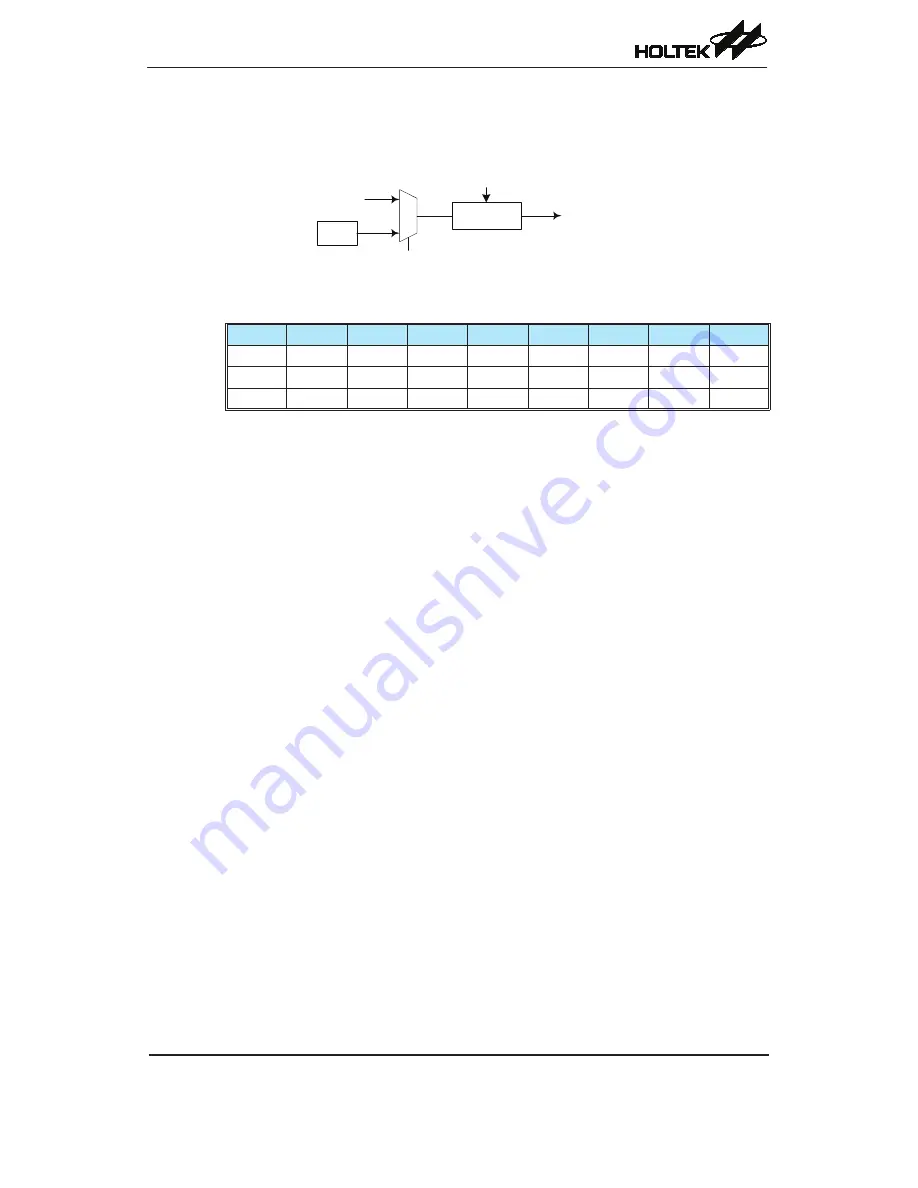
Rev. 1.00
1��
��ne ��� �01�
Rev. 1.00
1�9
��ne ��� �01�
HT66FM5440
Brushless DC Motor A/D Flash MCU
HT66FM5440
Brushless DC Motor A/D Flash MCU
The Time Base clock source, f
TB
, originates from the internal clock source f
SYS
/4 or f
TBC
and then
passes through a divider, the division ratio of which is selected by programming the TB
1
and TB
0
bit
s to obtain longer interrupt periods whose value ranges.
M
U
X
f
SYS
/4
f
TBC
÷�
1�
~�
15
TBCK
f
TB
Time Base Interr�pt
TB1~TB0
LIRC
Time Base Interrupt
TBC Register
Bit
7
6
5
4
3
2
1
0
Name
TBON
TBCK
TB1
TB0
—
—
—
—
R/W
R/W
R/W
R/W
R/W
—
—
—
—
POR
0
0
1
1
—
—
—
—
Bit 7
TBON
: Time Base Control
0: Disable
1: Enable
Bit 6
TBCK
: Select f
TB
clock
0:
f
TBC
1:
f
SYS
/4
Bit 5~4
TB1~TB0
: Select Time Base Time-out Period
00:
f
TB
/2
12
01:
f
TB
/2
13
10:
f
TB
/2
14
11:
f
TB
/2
15
Bit 3~0
Unimplemented, read as "0"
LVD Interrupt
The Low Voltage Detector Interrupt is contained within the multi-function
i
nterrupt 7 sharing the
same interrupt number with other interrupt sources in the same group. After being configured with
the desired interrupt priority level, an LVD Interrupt request will take place when the LVD Interrupt
request flag, LVF, and the associated interrupt priority request flag
are
set, which occurs when the
Low Voltage Detector function detects a low power supply voltage. To allow the program to branch
to its respective interrupt vector address, the global interrupt enable bit, EMI, Low Voltage Interrupt
enable bit, LVE, and associated interrupt priority enable bit must first be set. When the interrupt is
enabled, the stack is not full and a low voltage condition occurs, a subroutine call to
its
i
nterrupt
vector will take place. When the Low Voltage Interrupt is serviced, the EMI bit will be automatically
cleared to disable other interrupts, however only the interrupt priority request flag will be also
automatically cleared. As the LVF flag will not be automatically cleared, it has to be cleared by the
application program.
















































